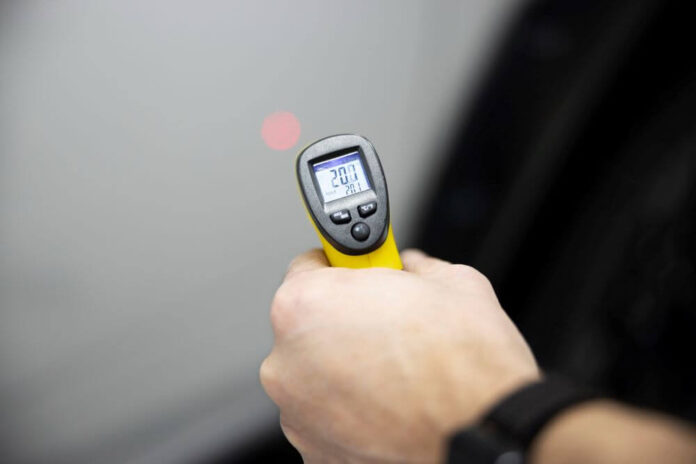Choosing a breathalyser is not just about convenience—it’s about accuracy and trust. Many devices promise reliable results, but not all deliver. The features that matter most for dependable alcohol testing are sensor type, calibration quality, and consistency of results. Without these, the numbers on the screen may not reflect actual blood alcohol levels.
Different technologies, from fuel cell sensors to semiconductor models, can change how precise a device is in real-world use. Professional-grade options often provide greater accuracy, but they also require proper maintenance and calibration to stay reliable. Understanding which features directly impact performance helps avoid misleading data that could affect safety or decision-making.
When compared with blood tests, breathalysers may not always match perfectly, but the right features can bring results closer to professional standards. By focusing on proven technology and reliable design, anyone can choose a device that offers confidence in its readings.
Key Takeaways
- Reliable devices depend on accurate sensors and proper calibration
- Certain features improve consistency and trustworthiness in results
- Strong design choices make breathalysers closer in accuracy to blood tests
Essential Breathalyser Features for Reliable Alcohol Testing
Reliable alcohol testing depends on how well a breathalyser measures blood alcohol concentration, the type of sensor it uses, and how consistently it is maintained. Each of these elements directly affects the accuracy and trustworthiness of results in both personal and professional settings.
Accuracy and Sensitivity
Accuracy is the most critical factor when choosing a breathalyser. A reliable device should provide results within a narrow margin of error, often ±0.005% BAC or better. Sensitivity also matters, as it determines how effectively the device detects even small amounts of alcohol in a breath sample.
Factors like waiting at least 15 minutes after eating or drinking before testing can improve accuracy. Substances such as mouthwash or food containing alcohol can temporarily skew readings. For consistent results, users should follow proper testing procedures and avoid external contaminants. High-quality models often display results to three decimal places (e.g., 0.032% BAC), which allows for more precise monitoring. This level of detail is especially useful in workplace safety programs and when implementing regular breathalyser tests on-site to ensure compliance with alcohol policies.
Sensor Technology: Fuel Cell vs. Semiconductor
The type of alcohol sensor inside a breathalyser greatly affects performance. Fuel cell sensors are widely regarded as the most reliable for professional and personal use. They use an electrochemical process to measure ethanol, offering high accuracy, stability, and reduced false positives from substances like acetone. Semiconductor sensors are more affordable but tend to be less precise. They can react to compounds other than alcohol, which makes them less suitable for legal or workplace testing.
Fuel cell breathalysers are the standard for law enforcement and workplace testing because they maintain accuracy across repeated use. For individuals who need dependable results, investing in a fuel cell model is often the most practical choice despite the higher price.
Calibration and Maintenance
Even the best breathalyser requires regular calibration to remain accurate. Calibration aligns the alcohol sensor with known BAC standards, ensuring that readings do not drift over time. Without it, results can become unreliable and misleading. Manufacturers typically recommend calibration every 6 to 12 months, depending on usage.
Proper storage and handling also extend the lifespan of a breathalyser. Avoiding extreme temperatures, moisture, and contamination helps preserve sensor accuracy. For organizations and workplaces, establishing a maintenance schedule ensures that every unit provides consistent and dependable alcohol testing results.
Comparing Breathalyser Reliability with Blood Tests
Blood tests and breathalyzers both measure alcohol levels but in different ways. Blood tests directly analyze alcohol in the bloodstream, while breathalyzers estimate levels through breath samples. Each method has strengths and weaknesses related to accuracy, external influences, and legal standing.
Blood Alcohol Content vs. Breath Alcohol Content
A blood test measures blood alcohol concentration (BAC) directly by analyzing a blood sample. This method provides a precise reading of the actual alcohol present in the bloodstream. Because of this direct measurement, it is often considered the most accurate form of alcohol testing.
A breathalyzer, on the other hand, measures alcohol in exhaled breath and then estimates BAC using a conversion ratio. This ratio assumes a standard relationship between breath alcohol and blood alcohol, but individual differences in physiology can affect the result. For example, variations in body temperature, lung capacity, and metabolism may cause the same amount of alcohol to register differently across individuals. While the difference is usually small, it can matter in legal or workplace testing scenarios where precision is critical.
Limitations and External Influences
Breathalyzers are more prone to interference than blood tests. Substances like mouthwash, breath sprays, or even certain medical conditions can create false positives. Residual alcohol in the mouth may also inflate results if a test is taken too soon after drinking. Environmental factors play a role as well. Temperature, humidity, and calibration of the device can affect accuracy. If a breathalyzer is not properly maintained or regularly checked, readings may drift from actual BAC levels.
Blood tests avoid many of these issues because they measure alcohol directly in the blood. However, they require trained personnel, sterile equipment, and laboratory analysis. This makes them less convenient for roadside or workplace screening compared to portable breathalyzers.
Conclusion
Reliable alcohol testing depends on selecting a breathalyser with proven accuracy, consistent calibration, and appropriate sensor technology. Devices using fuel cell sensors generally provide more dependable results than semiconductor options, especially for frequent use.
Key features such as ease of use, display clarity, and maintenance requirements also influence practical reliability. A well-designed device that balances accuracy with convenience is more likely to deliver consistent results in real-world conditions. When comparing options, individuals should weigh accuracy, cost, and intended frequency of use. Choosing a model that fits these needs ensures more trustworthy readings and safer decision-making.
